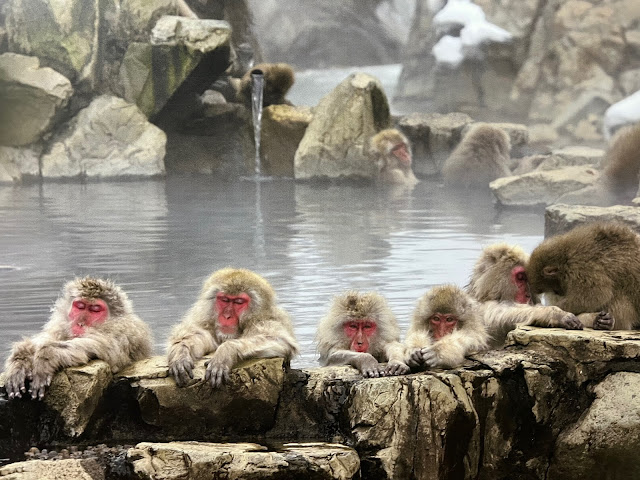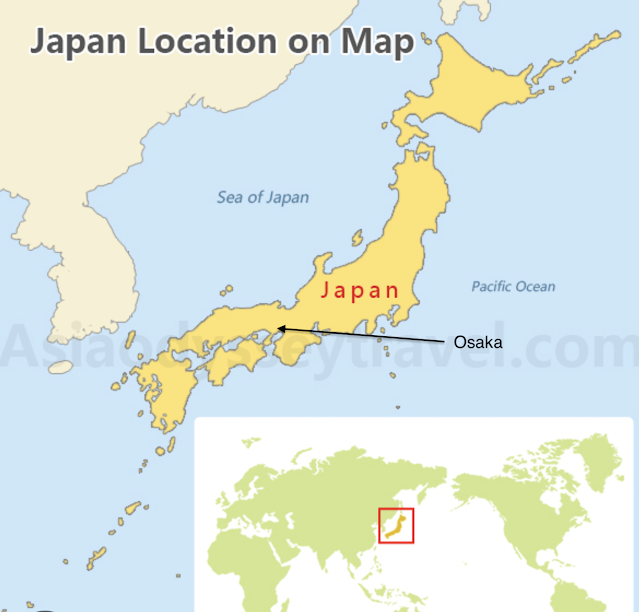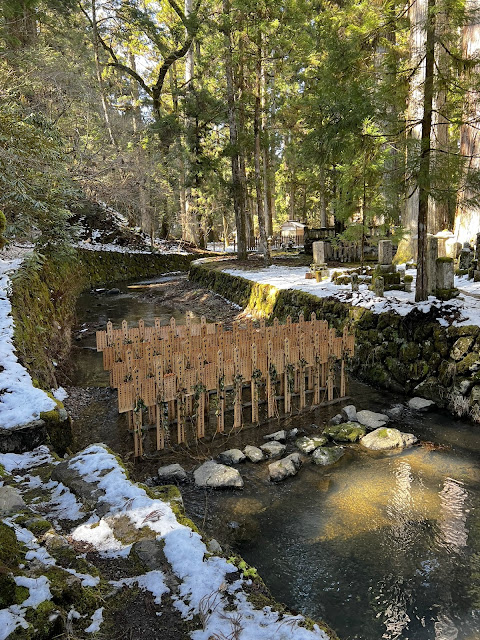"The Japanese have a nice way of putting it: 'the day you cease to travel, you have arrived.'"
Anthony de Mello
On March 20, 2025, Melanie and I headed for the next instalment of our 2025 Winter-run-away. We hooked up for 3 weeks with our good friends and travel partners-in-crime, Betsy Bond and Terry Sooley, to explore the 'Land of the Rising Sun', the island nation of......
Japan
With a population of 123 million people, Japan is one of the most beautiful, interesting, and friendly countries in the world. From bustling Tokyo and Zen-like Kyoto all the way to laid-back Yamanouchie - time honoured traditions blend with modern ingenuity in the land of cherry blossoms and stone gardens. Ancient temples cast shadows across neon-lit streets, while the bullet train slices through the picturesque countryside and golden pavilions sparkle against snow-capped mountains. Each moment in Japan reveals how past and future dance in perfect harmony.
While the Japanese are known to be reserved and their English language skills are not their strongest asset, they will go out of their way to make you feel welcome. And if you like food, I mean reallllllly like food, the 'living-to-eat-not-eating-to-live' like food, then Japan is a foodie's paradise.
Our first stop is, appropriately, to the city known as 'Japan's kitchen',.......
Osaka
With a population of over 17 million, Osaka is one of Japan's largest cities, so there's no shortage of things to do. Last year it attracted 16 million international tourist, earning recognition as the top "World-famous tourist destination in Japan." This year, they are hosting the World Expo (April - Oct.) and are anticipating 28 million visitors, so we got there just before the madness began!!

|
We took a stroll downtown Osaka. You quickly notice how many people there are, definitely no escaping the masses here.
|
 |
| Dotonbori Street where the billboards compete with rather large birds. |
 |
| The canal - quiet by day, but holy shit does it ever become total madness at night. |
|
 |
| Darkness is when the billboards are at their best and the crowds are at their worst. It's a trade-off, but whattya gonna do? |
 And speaking of billboards, here is our first "very interesting but not very funny Japanese trivia": It is well known that Japanese people love to adorn their cityscape with billboards, and Osaka seems to be ground zero for this in Japan. The most famous billboard in the country is Glico Man, a large neon sign featuring a man running on a blue track. This billboard (directly behind us) was first erected in 1935 as an advertisement for Glico, the Japanese food company that produces Pocky and Pretz. Of all the neon billboards in Japan, this oddity is the one they pick to be a national tourist attraction! Well, what do you think of that now?
And speaking of billboards, here is our first "very interesting but not very funny Japanese trivia": It is well known that Japanese people love to adorn their cityscape with billboards, and Osaka seems to be ground zero for this in Japan. The most famous billboard in the country is Glico Man, a large neon sign featuring a man running on a blue track. This billboard (directly behind us) was first erected in 1935 as an advertisement for Glico, the Japanese food company that produces Pocky and Pretz. Of all the neon billboards in Japan, this oddity is the one they pick to be a national tourist attraction! Well, what do you think of that now?
Meanwhile, back to "Japan's Kitchen", we decided to partake in an Udon Noodle making contest - the person with the stiffest noodle won! LOL...I got a million of them!
 |
| "First you put flour in bowl, next you put salt in bowl, next you put water in bowl. OK you done! 250 yen please." |
 |
| Jeeze Terry it's not a fight with Godzilla....it's a bag of noodle flour, massage it with your toes, don't stomp it to death! |
 |
| "The noodles are great, and Terry I can hardly taste your socks!" |
We weren't done with the cooking classes and this time we stepped it up a notch and went to an aggressive Mochi Rice Ball class. What's that right?!?! Mochi is glutinous rice that you pound into a dense ball that you proceed to dip into various sauces.
 |
| Ayyyyyy-Yaaaa. Like splitting wood, except the wood ain't splitting. |
 |
| And these white Mochi Rice Balls are the result of the extra effort needed to pound the p**s out of the rice. Dip them in the sauces and chew....and chew.....and chew some more. A lot of effort. |
 |
| The girls said let's do another cooking class, the boys said let's not but say we did, and with that the fight was on. |
We needed to wear off some Udon noodles and Mochi Rice Balls, so a walk to the Osaka Castle was in order. A small oasis within the city, this castle and adjoining grounds were built in 1583.
 |
| The massive moat that surrounds the Osaka Castle. |
Once again it's time for "very interesting but not very funny Japanese trivia": It is 'cherry blossom season' in Japan and that's a very big deal here! Osaka is regarded among Japan's best area for cherry blossom 'viewing' and Osaka Castle Park, brimming with more than 4,000 cherry trees, is THE place to be. Cherry blossom season brings out the Japanese people who have a strange obsession with dressing up in traditional garb and gathering in mass to take Instagram pictures of themselves. True story....of course interesting but not very funny!
 |
| The selfie miesters with Osaka Castle behind us. |
With access to some of the fastest trains on the planet we did a side trip to the small mountaintop Buddhist community of.......
Mt. Koya
A deeply sacred place, central to the Shingon sect of Buddhism, Mt. Koya is also an UNESCO World Heritage Site due to its more than 1000-year-old teaching and meditation sites.
 |
| Getting to Mt Koya from Osaka requires taking the 2 hour fast train to the base of the mountain, whereby you take the cog-train 800 metres up the mountain (into snow country) to the village of Koyasan. |
 |
| Monk about to cross the Ichi-no-hashi (I'm not making that up) Bridge which marks the official entrance to the temple grounds and is considered the gateway between two worlds, the sacred and the secular worlds. Visitors are expected to bow to show their respect to Kobo Daishi before crossing into the other world. I didn't cross over.....I was afraid I'd not get back to this world. |
We are on the move again, this time to the city that needs no introduction because of its unenviable distinction.......
Hiroshima
To most people, Hiroshima means just one thing - the city's name will forever evoke images of August 6, 1945, when Hiroshima became the target of the world's first atomic-bomb attack. Hiroshima's Memorial Peace Park is a constant reminder of that day, and it attracts visitors from all over the world with its moving message of peace.
The only site I wanted to see while in Hiroshima was the UNESCO World Heritage site of the Atomic Bomb Dome. The Dome was the only structure that remained standing in the area around the bombing of Hiroshima on August 6, 1945. The ruin Exhibition Hall serves as a memorial to the over 140,000 people who were killed in that bombing.
 |
| The Dome is kept in a state of preserved ruin as a reminder of the destructive effects of nuclear war. |
 |
| Today Hiroshima offers a rich and diverse experience beyond its tragic history and enjoying the Peace Park on this beautiful March day is next!!! |
 |
Below this Cenotaph is a stone chest holding a register of the names of the 220,000 people that died because of the bomb, either because of the initial blast or exposure to radiation.
|
 |
| The children's peace monument.....it has a big bell inside and you can ring it, except Melanie wouldn't let me. |
 |
Melanie: "I don't know Terry, it looks like a dime to me." Betsy: "That's not a dime, looks more like a yen to me."
Terry: "No way Bets, that's definitely a dime." |
We leave the park and head for the Hiroshima Castle. The original was built in 1589, unfortunately it was destroyed when the atomic bomb was exploded, so this one is a replicate.
 |
| We just made it in before they closed for the day. We climbed to the top and had a gawk at the city. |
 |
| This caused us to pause for reflection. |

Once again it's time for "very interesting but not very funny Japanese trivia": In Japan, punctuality is highly valued and considered a sign of respect and professionalism. There is nothing more shunned in Japanese culture than being tardy. In fact, being on time is expected, and this expectation extends to their train system. The above Bullet train can reach speeds of 320km/hr and is the most logical choice for getting around the country BUT don't be late because their timing is down to the second. When it says it is leaving the station at 10:28, it is leaving at 10:28.
We find ourselves in the Shukkeien Park for a few moments of relaxation......
 |
| The garden, in the middle of the bustling city, is a welcome reprieve from the pavement hustle. |
 |
| Turtle Island. |
 |
| The Japanese take their gardens verrrrry seriously and they design them revolving around key concepts: asymmetry, enclosure, borrowed scenery, and a focus on nature's elements. Everybody is learning things here today!!! |
We take advantage of our two days in Hiroshima by doing a daytrip to our third UNESCO World Heritage site of.......
Miyajima Island
A small island less then an hour via water ferry from Hiroshima. It is most famous for the giant torii gate, which at high tide seems to float on the water. The sight is ranked as one of Japan's three best views.
 |
| It being low tide, the torii gate is not considered 'floating', but the water temperature was in the 'damn cold' range and walking out here numbed my legs to the point it felt like I was floating! |
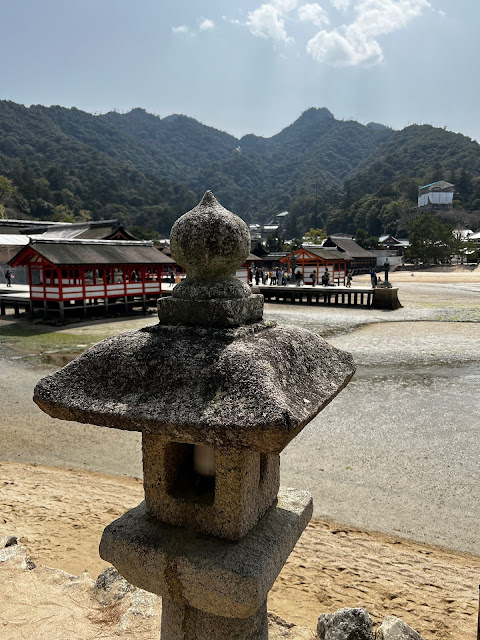 |
| The Itsukushima Shrine, over yonder, is a temple complex that also sits on top of the water (when the tide is in). We would have went in except the crowds were overwhelming large. |
 |
| Miyajima has a large population of wild deer that have become accustomed to people. They roam everywhere and charge exorbitant prices to have their picture taken...... |
 |
| ....and they only take yen (or credit card). |
 |
| We found a micro-brewery on the island with really good IPA's....I'm liking this place more and more!! |
 |
| We also found Elon Musk and his children. |
 |
| Apparently, Miyajima has the largest rice paddle in the world.....I'm not going to dispute that. Hit me with your rhythm stick!!! |
A couple of cable cars (called ropeways) whisk us up Mt. Misen, the island's highest peak at 535 metres.
 |
| The view from the top. |
 |
| At the summit stand several temple structures..... |
 |
| ....including the Hall of the Spiritual Flame which protects a flame that is said to have been lit 1200 years ago. Now it's not for me to say, but I was expecting something more from a flame 1200 years old.....I mean it looks like a large pot of beans over a fire at the GAP. |
 |
With no chance of getting on the cable car down, we hit the 2km trail and made our way back to the ferry.
|
 |
| As the sun sets on Miyajima Island we see the floating torii ! |
Time once again to move and this time we head the city reputed to be Japan's most beautiful and the cultural capital......
Kyoto
The city can best be described as a large atmospheric temple with sublime gardens, traditional tea houses and real geisha scurrying to their next liaison.
Kyoto has an amazing 17 UNESCO World Heritage sites (most of them are Buddhist temples), and we aim to see a couple. We book a traditional Japanese home in the downtown Kyoto for four nights and after we get straighten away, we set out to explore: first stop the city food market, cause we're foodies and we're hungry!
 |
| We were only 30 seconds into the market when this fella grabbed our attention and offered sake for $1, and wanted to know would we like to try some......like yeah! |
 |
| "Well this is as far as we need to go." |
 |
| You can get anything you want at Alice's Restaurant and the Nishiki Market. |
 |
| It's a food stall market but the Japanese really like to display their food. |
 |
| Wagyu beef, the world's most expensive and tastiest. This plate of Udon noodles, 2 slices of paper-thin Wagyu and an egg yoke.....$30. |
With the market madness out of our system we settle into a more civilized look at Kyoto. We decided to do some of the temple beat, with our first stop at the Yasaka Shrine. But first, it's time for some very interesting but not very funny Japanese trivia.....
The Japanese have a real love-hate relationship with their toilets. First; they tend to stick them in the smallest closet in the house, usually with only enough room to back in/out of the throne. But then, they equip each toilet with a 14 button remote that does everything from heat the seat (for a toasty bum), heated bidet-style spray with 3 settings - front-middle-back (to get all the nether-region), blowdries (for fluffing up the butt-hairs) and even has a light so you can size up your accomplishments. The deluxe models (like this one pictured above) comes with built-in sink. Well, I be darned, ain't that very interesting but not very funny bit of trivia!
Now back to the Shrine.....
 |
| The Yasaka Shrine was beautiful but way too many tourist for my liking. Many of those that were over-running the place are Instagramming Glamour Girls, all dressed up in their get-ups that they rented across the street. |
 |
| I came, I saw, I conquered......or as they say here in Japanese: 'Watashi wa kita, watashi wa mita, watashi wa seifuku shita.' |
We continue our journey, hoping to get a little further away from the hordes. We found that solitude a little further up the hill at the Otani Sobyo Temple, with the exception of one other guy, we were the only tourists there!!
 |
| I love temples that let you play!! |
We were templed-out for the day so we headed for home, but to get there we decided to cut through the famous Gion district of Kyoto. The Gion is Kyoto's most famous geisha district....yes folks they still exist!
 |
| They were almost as hard to spot as the Wild Baloney! |
 |
| A small river (complete with stork) works its way through part of the Gion. |
Our exploration plans the next day is to pick-up where we left off. First stop is the UNESCO World Heritage Temple, Kinkaku-ji Temple. The famed "Golden Pavilion".....
 |
| The golden pavilion behind us is a Zen Temple whose top two floors are completely covered in gold leaf.... |
 |
| ......which, to satisfy your curiosity, is $5US million in gold leaf. My advise is to be downwind in the event of a good ole wind storm! |
After seeing the main site, and with rather large crowds in every direction, we decided to exit stage left. We headed to another, but less known UNESCO World Heritage temple, Ryoan-ji Temple (pay attention as there will be a quiz at the end of the Kyoto trip on the Temples!!).
 |
| Ryoan-ji Temple was established in 1450 (long before North America was discovered). |
 |
| It's cherry blossom time! |
 |
| The famous "Zen" rock garden with its 15 mystical rocks floating in a sea of gravel. The 15 rocks are carefully arranged so that there is always one rock that cannot be seen, regardless of the angle. Apparently, the rocks spell out the Chinese character for "heart". |
Our last day in Kyoto is spent at the Fushimi Inari-taisha Shrine which is one of the most popular shrines in Japan (and definitely my fav.). The seemingly unending path of over 10,000 vibrant orange torii gates takes visitors on a magical mystery tour!!!
 |
| The tourist brochure said we'd 'climb 4.3km up Mt. Inari', evidently that was a translation error, cause that hill behind me is Mt. Inari....hill yes, mountain no, and the trail itself is 4.3km in total 'length' not 4.3km uphill. Trickery I tell ya! |
 |
| Gate #1......9,999 more to go! |
 |
| There are sections here where there are 800 of these gates in a row which creates an impression of a tunnel. |
 |
| After the halfway mark the crowds thinned out to near non-existent, I guess the climb up did the Glamour Girls in! |
 |
| It wasn't all torii gates...... |
 |
| .....there were times when you walked out of the gates altogether! |
 |
| The selfie miesters reach the top! |
Well that brings us to the end of our Kyoto trip and, once again, it's time for us to hit the road and head to our next Japanese destination. This time we are going to slow it down a little and head for........
Kiso-Fukushima
A small town on the Nakasendo Trail - an old trail, which was used from 1600 - 1867, connecting Tokyo and Kyoto. The trail passed through 69 'post towns' which served as rest and service stations for travellers. These towns provided accommodation, food, and other amenities, making them vital hubs for commerce and travel. Today, the hikes between these service towns offer the adventurer a glimpse of rural and old Japan!!
We are up early and catch a 30 minute train to the bus that takes us to the 'post town' of Tsumago where our 8km hike to Magome will commence.
 |
Downtown main street Tsumago where it all happens....party central....where's the hotdog vendor set up?
|
 |
| Couldn't find the hotdog vendor but the bun-man was churning out stuffed buns that were very tasty! |
 |
| Tsumago was a clear contender for the Clean & Tidy Towns award. |
 |
| It's not for me to say, but a can of paint would go a long way! |
 |
| Ready to rumble, but first we got to find the trailhead. |
 And now we interrupt this broadcast to bring you very interesting but not very funny Japanese trivia. The Japanese are rule-followers....it's in their genetic makeup. When you're a country of 123 million individuals on an island nation that's not as big as California, you kinda got to follow the rules. One of those "rules" is the process of queueing - they patiently queue for everything.....EVERYTHING. They also exercise a certain amount of tolerance for those that don't know how to queue and/or those that refuse to queue. In the picture above they are queued up for a restaurant that has yet to open for the day.....very interesting but not very funny.
And now we interrupt this broadcast to bring you very interesting but not very funny Japanese trivia. The Japanese are rule-followers....it's in their genetic makeup. When you're a country of 123 million individuals on an island nation that's not as big as California, you kinda got to follow the rules. One of those "rules" is the process of queueing - they patiently queue for everything.....EVERYTHING. They also exercise a certain amount of tolerance for those that don't know how to queue and/or those that refuse to queue. In the picture above they are queued up for a restaurant that has yet to open for the day.....very interesting but not very funny.
We now return to our regularly scheduled Nakasendo hike......
 |
| Most people prefer to start the hike from Magome and finish in Tsumago, as the former is at higher altitude, meaning less uphill walking overall - considering ourselves not to be "most people", Melanie and I went the other way. This direction means it is all uphill until you reach Magome Pass at 790MASL. |
 |
| The trail is in unbelievably good shape, something you come to expect in Japan. |
 |
| Unbeknown to most people, this part of Japan has a rather large and healthy black bear population, so the Trail has a 'bear bell' stationed at every kilometre. Banging the bell is supposed to scare the bears or let them know that supper is ready....I'm not sure. |
 |
| A 'free' teahouse at the halfway mark. I think this guy was the caretaker of the place. |
 |
| There is a little bit of everything on this trail, including several of these water wheels. |
Two hours after starting our hike we arrive at the post town of Magome.
 |
| Magome has a totally different look and atmosphere from its neighbour of Tsumago. |
 |
| The Japanese don't believe in the 'front lawn' concept. |
 |
| Downtown main street Magome where it all happens....party central....where's the hotdog vendor set up? |
 |
| Time to catch the bus back to the train and back to town. |
Back in Kiso-Fukushima.....
 |
| The Kiso River runs pass our hotel (our rooms were right on the river)! |
 |
| Taking a few minutes to soak the feet at the free foot bath steaming with natural hot spring water. After a long day of hiking the Nakasendo, there was no better way to soothe the tired legs. |
 |
| I can forgive a Japanese restaurant for having these chairless tables that are only 6 inches off the floor, when the food is exceptional and the beers are cold! |
We are on the move again. This time we are heading to the hot spring town of.....
Yudanaka
This tiny village is the closest to Jigokudani Monkey Park located in the mountains of Nagano. Yudanaka is also known for its onsen (hot springs) and being a somewhat 'quiet town'.
We are only here for two nights and our sole raison d'etat is to see the snow monkeys. Jigokudani Park is inhabited by Japanese Macaques, also known as snow monkeys, that have taken a particular liking to bathing in hot springs.
 |
| "All aboard for Yudanaka." |
 |
| Our hotel arranged for free transportation to the Park and provided us with boots so we wouldn't get monkey sh*t over everything....I'm liking it!!! |
 |
| Great day for a walk in the woods just as that spring rot smell ferments up from the forest floor! |
 |
| Who knows what interesting sites you'll stumble across when going for a walk in the woods!! |
 |
| All kinds of shady individuals to be found! |

And now, once again, it is time for very interesting but not very funny Japanese trivia. In Japan, an 'onsen' is a natural hot spring which is a cherished part of Japanese culture. They offer a unique bathing experience with various health benefits and are often found at traditional inns, called 'ryokan'. Onsen's are popular tourist destinations, with many towns built around these hot spring sources. Our ryokan, in Yukanaka, had its onsen in the basement, and the garb we have on in the picture, is what the hotel supplies you to go to the onsen in the basement. In 1980, the rock band The Vapors released a song called Turning Japanese, and to be honest, "I think I'm turning Japanese, I really think so"!
We are now off to our next destination, the largest city in the world......
Tokyo
Japan's busy capital mixes both the ultramodern and the traditional, from neon-lit skyscrapers to historic temples, it's quite the mixture. It would appear the 37million residents have a passion for everything new, as Melanie pointed out - they're living in 2070 not 2025. BUT beware, Tokyo is infamous for being very expensive and Gozilla has also been know to dine out there.
We are in Tokyo for three nights, paying the most I've ever paid for a hotel room, that coincidently, is also the smallest room I've ever stayed in....c'est la vie.
 |
| Like millions before us, we arrived at Tokyo's Central Train Station, a building that was built over 100 years ago....and that appears to be the only thing around here that is 100 years old. |
 |
| Tokyo's skyline is like most large city skylines except for this optical illusion building.....it's more optical if you turn your head sideways and squint your eyes while holding your index finger up. |
 |
| "OK Betsy, I'll go to Hooters with you!" |
Exploring Tokyo, first stop is the Imperial Palace Gardens. This former shogun castle has been the official palace since 1868 and we were hoping to see it, but unfortunately the King wasn't in. We told the guard the Queen would do, but she wouldn't receive us either, so we were relegated to the gardens.
 |
| Take time and reflect. |
 |
| Me son, dat ole king got some gardener. |
 |
| The Imperial Castle was once the largest in the world. They had some size swimming pool! |
 |
| A glimpse of the Imperial Palace. |
Later that night, we checked out Ueno Park for a lantern-lite cherry blossom stroll.
 |
| It took sometime to find out where it was we wanted to go and this delay got us to the park near closing time - that was an unexpected bonus as the crowds had already dispersed. |
 |
| When we first arrived in Japan, the cherry blossoms were only starting to bloom, but now they are out in full force and the tourist prices have been adjusted accordingly!! |
On our last day in Tokyo, we visited the city's oldest temple, Senso-ji. Built in 628, this colourful temple is considered Tokyo's most popular.....and we all know what that means....more people!!!
 |
| The massive Hoz-mon Gate, inner entrance to the temple. |
 |
| So I stood here and I waited and I waited and finally, there was an opening when there wasn't a single person in the frame....I threw up my arms and struck a pose....damn not quick enough. |
 |
| Cherry trees spill over onto Nakamise Street, one of Japan's oldest shopping streets that is actually within the temple grounds. The lanterns are saying something, but since I don't speak Japanese, I have no idea what it is! |
 |
| Terry and Betsy with the Five-Storied Pagoda, built in 942, in the background. |
 |
| The Temple grounds were postcard picture perfect. |
 |
| Make a great puzzle! |
 |
| No words necessary! |
Last stop for Tokyo is the busiest crosswalk in the world, Shibuya Crossing, which is renowned for the sheer volume of pedestrians who cross the intersection simultaneously, with as many as 3,000 people crossing at a time.
 |
| Similar to the famous Abbey Road Crossing in London, people of all strips flock to the Shibuya Crossing for the photo op....including Cat Lady. |
 |
| Not to be outdone! We arrived at the Shibuya Crossing close-on-midnight, so the masses had dispersed and I could stop in the middle of the road and have a picture taken! |
Time for the next instalment of very interesting but not very funny Japanese trivia. Politeness is a fundamental aspect of Japanese culture and is strongly linked to showing respect for others. As an example of this, one merely need ride an escalator, where everyone keeps to the left, allowing anyone in a hurry to have unimpeded passage on the right. I pine for the days when people were more polite but I didn't realized I had to go to Japan to find it.
Our time in Japan is coming to an end so we spend the last three days in........
Hakone
Famous for hot springs (onsen) and natural beauty, this mountainous town is less than 100 kilometres from Tokyo but might as well be on the opposite side of the world. Most of the town is within the borders of the volcanically active Fuji-Hakone-Izu National Park and was the main reason we wanted to see the place.

We arrive via train (like all of our Japan travels) and immediately set about to see the town.
 |
| Hakone onsen's are world famous with many celebrities, such as the late great John Lennon, making regular pilgrimages here. Us four, while not so famous, came for the beauty of the place! |
 |
| A river runs through it! |
 |
| All throughout Japan we saw the pride that Japanese take in maintaining their gardens. What we did not see was a single lawn mower. |
 |
| The sisters are doing it for themselves. |
 |
| We found a craft brewery in Hakone......happy days! |
The next day we grab a local train and head for the hills of the Owakidani valley. Our first stop is at Japan's first Open-Air Museum!
 |
| Spread over 70,000 sq. mts., this museum features over 100 sculptures from artist from around the world, including this piece called the 'Massive Mirror Ball'. |
 |
| The 'Yoga Lady on the Fried Egg' sculpture.....nice!! |
 |
| Another 'Massive Mirror Ball'....they really like their massive balls here in Japan. |
 |
| A five story stained glass tower and we are taking the stairs to the top....... |
 |
| ......wow. |
 |
| Our need and desire to understand the significance of each piece of art required us to stand on our feet for a long time, so an onsen (hot springs) on the grounds was a welcome treat! |
 |
| The 'Someone Gave That Fella A Hand' sculpture. |
 |
| Give us a kiss love! |
 |
| Terry lost in the 'Lost World' sculpture. |
With our art quota filled, we hopped on the train and headed for the top of the mountain.....
 |
| The final leg of our journey to the top of the mountain was via cable car, but when we arrived at the terminal we find out it is cancelled because of the wind. We were able to grab a cab nearly to the top, but it is extremely windy and very cold, so we stay only long enough to get a picture of the billowing volcanic vents. |
 |
| A quick glimpse of Mt. Fuji before the clouds moved back in. |
 |
| With the cable car up top cancelled, there were hundreds of stranded tourist and the only logical way down for us, without a massive wait time, was to walk. This allowed us to witness the destruction of volcanic activity up close! |
 |
| Betsy bought some black eggs while on the mountain - apparently they are boiled and blackened by a chemical reaction when cooked in the mountain volcanic hot springs. Eating one is said to prolong your life by seven years. I ate two!! |
 |
| A Japanese ryokan don't come with the traditional western furniture normally found in most hotel rooms. A table with 6-inch legs, two chairs with no legs, and two floor futon mattresses (normally stuffed in a closet when not in use) is all ya gets! |
 |
| Terry demonstrating how a westerner sits in a ryokan room.....good job Terry! |
Time for my final very interesting but not very funny Japanese trivia. If you are expecting or hoping for a western style breakfast when staying in a traditional ryokan the best I can say to you is: good luck! Breakfast consist of several tiny bowls of various fermented vegetables, a cold very soft boiled egg (the only way they eat them), a bowl of clam miso soup, rice and always a fish (in this case dried horse mackerel). Always an adventure when eating in Japan!!
And with that we begin the trip home!



 And speaking of billboards, here is our first "very interesting but not very funny Japanese trivia": It is well known that Japanese people love to adorn their cityscape with billboards, and Osaka seems to be ground zero for this in Japan. The most famous billboard in the country is Glico Man, a large neon sign featuring a man running on a blue track. This billboard (directly behind us) was first erected in 1935 as an advertisement for Glico, the Japanese food company that produces Pocky and Pretz. Of all the neon billboards in Japan, this oddity is the one they pick to be a national tourist attraction! Well, what do you think of that now?
And speaking of billboards, here is our first "very interesting but not very funny Japanese trivia": It is well known that Japanese people love to adorn their cityscape with billboards, and Osaka seems to be ground zero for this in Japan. The most famous billboard in the country is Glico Man, a large neon sign featuring a man running on a blue track. This billboard (directly behind us) was first erected in 1935 as an advertisement for Glico, the Japanese food company that produces Pocky and Pretz. Of all the neon billboards in Japan, this oddity is the one they pick to be a national tourist attraction! Well, what do you think of that now?




















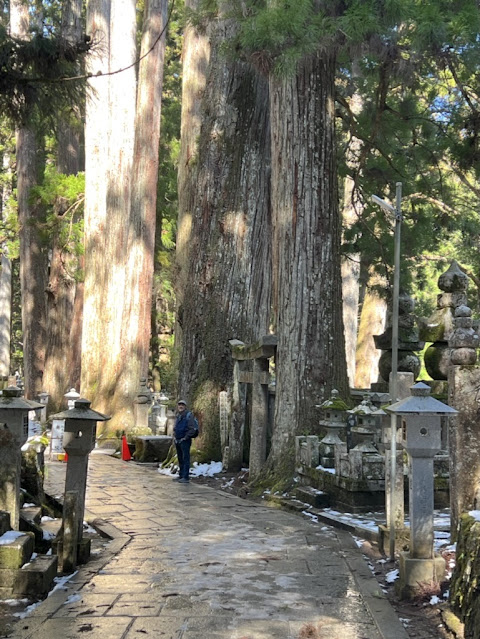


























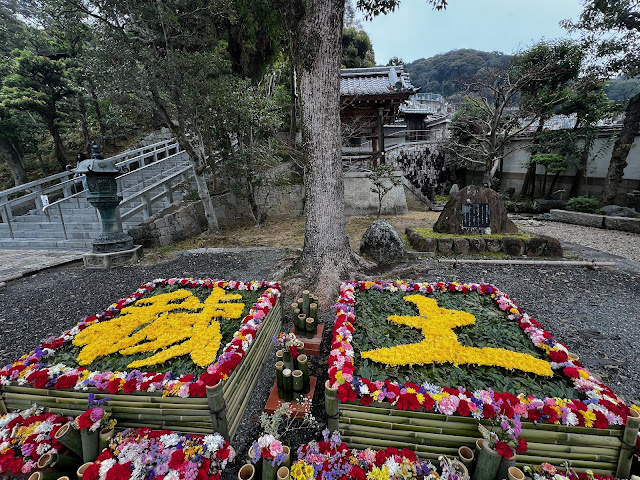
























 And now we interrupt this broadcast to bring you very interesting but not very funny Japanese trivia. The Japanese are rule-followers....it's in their genetic makeup. When you're a country of 123 million individuals on an island nation that's not as big as California, you kinda got to follow the rules. One of those "rules" is the process of queueing - they patiently queue for everything.....EVERYTHING. They also exercise a certain amount of tolerance for those that don't know how to queue and/or those that refuse to queue. In the picture above they are queued up for a restaurant that has yet to open for the day.....very interesting but not very funny.
And now we interrupt this broadcast to bring you very interesting but not very funny Japanese trivia. The Japanese are rule-followers....it's in their genetic makeup. When you're a country of 123 million individuals on an island nation that's not as big as California, you kinda got to follow the rules. One of those "rules" is the process of queueing - they patiently queue for everything.....EVERYTHING. They also exercise a certain amount of tolerance for those that don't know how to queue and/or those that refuse to queue. In the picture above they are queued up for a restaurant that has yet to open for the day.....very interesting but not very funny.













